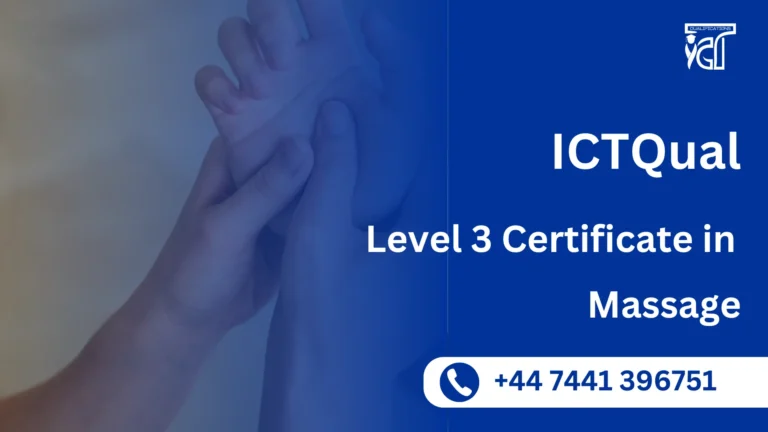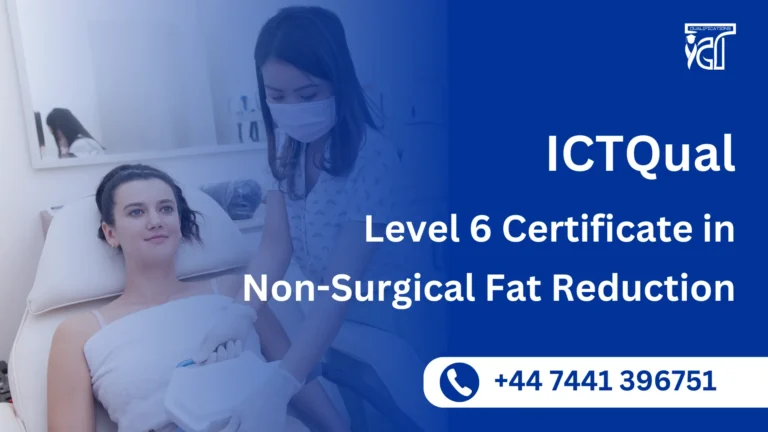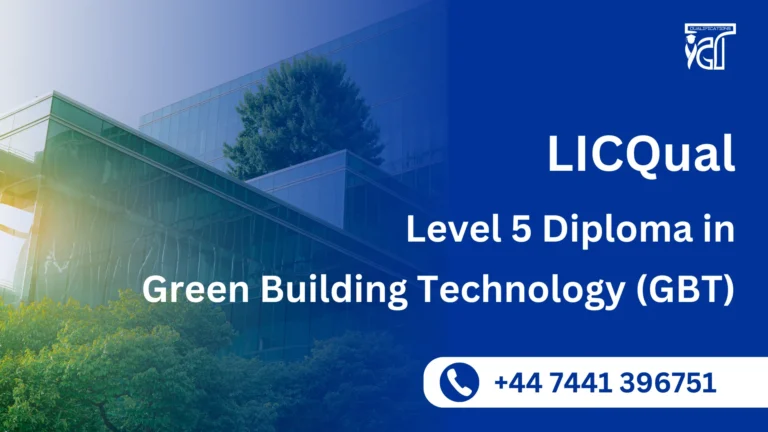The LICQual ISO 13216 ISOFIX Child Seats for Cars Lead Auditor Course is a specialized program designed to equip professionals with the knowledge and auditing skills necessary to assess, implement, and maintain compliance with the ISO 13216 standard for ISOFIX child restraint systems in vehicles.
This comprehensive training focuses on the requirements of ISO 13216, an international standard governing the installation and safety performance of ISOFIX child seat anchorage systems in cars, ensuring that automotive manufacturers, suppliers, and regulatory bodies adhere to strict safety and quality guidelines.
Learners will gain critical insight into auditing principles, risk assessment, quality control, and regulatory compliance specific to child restraint systems—empowering them to lead ISO 13216 audits confidently and competently across the automotive industry.
LICQual ISO 13216 ISOFIX Child Seats for Cars Lead Auditor
Following are the mandatory units of LICQual ISO 13216 ISOFIX Child Seats for Cars Lead Auditor:
| Unit Ref# | Unit Title | Credit | GLH |
| LICQ2200101-1 | Introduction to ISO 13216 and ISOFIX Systems | 8 | 24 |
| LICQ2200101-2 | ISO 13216 Standard Requirements and Application | 8 | 24 |
| LICQ2200101-3 | Lead Auditor Role and ISO Audit Process | 6 | 18 |
| LICQ2200101-4 | Regulatory Compliance and Certification for ISOFIX Child Seats | 6 | 18 |
| LICQ2200101-5 | Risk Management and Non-Conformance in ISOFIX Systems | 6 | 18 |
| LICQ2200101-6 | Continuous Improvement and Best Practices in Child Seat Safety | 6 | 18 |
GLH (Guided Learning Hours) and TQT (Total Qualification Time) are terms commonly used in vocational qualifications to help define the amount of time a learner is expected to spend on their studies.
1. GLH (Guided Learning Hours)
GLH refers to the number of hours a learner spends being directly taught, supervised, or supported during their course. This includes the time spent in activities such as:
- Classroom instruction
- Practical workshops
- One-on-one tutoring or mentoring sessions
- Online learning sessions with tutor support
In other words, GLH represents the time that learners are actively engaged with their instructors or learning activities.
2. TQT (Total Qualification Time)
TQT represents the total amount of time a learner is expected to invest in completing a qualification, including:
- GLH (Guided Learning Hours): Time spent on direct learning, as explained above.
- Self-Directed Learning: This includes time spent on independent study, research, assignment completion, preparation for exams, and any other work the learner does outside of direct teaching hours.
TQT is a broader measure that includes all the time required to achieve the qualification. It helps learners and employers understand the overall commitment required for the qualification.
Key Differences Between GLH and TQT:
- GLH focuses on direct learning with guidance or supervision.
- TQT includes GLH as well as independent study time and other learning-related activities.
Example:
If a qualification has a TQT of 600 hours and a GLH of 250 hours, it means the learner should spend 250 hours in direct learning (classroom, online, or tutor-led sessions) and 350 hours on independent study or research.
By the end of this course, learners will be able to:
Introduction to ISO 13216 and ISOFIX Systems
Upon completion of this unit, learners will be able to:
- Understand the history, significance, and global impact of the ISOFIX system.
- Identify the key components and benefits of ISO 13216 for child seat safety in cars.
- Explain the role of ISOFIX child seats in improving child safety during vehicle travel.
- Demonstrate an understanding of the global adoption and implementation of ISOFIX standards in automotive safety.
ISO 13216 Standard Requirements and Application
By the end of this unit, learners will be able to:
- Interpret the key clauses and technical specifications of ISO 13216.
- Understand the application of ISOFIX standards to different types of child safety seats.
- Assess the installation guidelines, safety performance, and testing criteria outlined in ISO 13216.
- Apply ISO 13216 standards to evaluate the compliance of child seats with required safety measures.
Lead Auditor Role and ISO Audit Process
After completing this unit, learners will be able to:
- Define the responsibilities and roles of a lead auditor in ISO 13216 compliance audits.
- Plan, execute, and report on audits for ISOFIX child seat manufacturers and suppliers.
- Prepare and use audit checklists, audit documents, and procedures specific to ISOFIX systems.
- Conduct on-site audits and assess the conformity of ISOFIX child seats to relevant safety and quality standards.
Regulatory Compliance and Certification for ISOFIX Child Seats
Upon successful completion, learners will be able to:
- Understand the regulatory landscape for child seat safety and ISOFIX system compliance.
- Navigate national and international regulatory requirements for child seats in vehicles.
- Describe the certification processes required for ISOFIX child seat manufacturers.
- Assess how different regulatory bodies impact the safety standards and certifications for child seats.
Risk Management and Non-Conformance in ISOFIX Systems
By the end of this unit, learners will be able to:
- Identify potential risks and hazards associated with ISOFIX child seats and their installation.
- Conduct root cause analysis to address non-conformances and safety issues.
- Implement corrective actions to mitigate risks and improve product safety.
- Evaluate product performance to ensure ongoing compliance with ISO 13216 and other safety standards.
Continuous Improvement and Best Practices in Child Seat Safety
Upon completion of this unit, learners will be able to:
- Apply continuous improvement strategies to enhance child seat safety and ISOFIX system effectiveness.
- Identify industry best practices for maintaining high-quality standards in child seat design and manufacturing.
- Integrate feedback mechanisms and audit results to ensure ongoing regulatory compliance and safety.
- Stay informed about evolving standards and best practices in child seat safety and automotive industry innovations.
Key Benefits of the LICQual ISO 13216 ISOFIX Child Seats for Cars Lead Auditor
Specialized Expertise in ISO 13216 Standards
Gain comprehensive knowledge of ISOFIX child seat anchorage system requirements as per ISO 13216, a crucial safety standard in the automotive industry.
Enhanced Auditing Skills
Develop professional auditing competencies to conduct internal and external audits for ISO 13216 compliance, including planning, execution, and reporting of audit findings.
Career Advancement Opportunities
Stand out in the automotive, manufacturing, and safety certification sectors with a specialized Lead Auditor qualification that increases your employability and opens doors to senior quality and compliance roles.
Compliance with Global Automotive Safety Regulations
Help organizations meet international vehicle safety requirements related to child restraint systems, reducing risk and ensuring regulatory conformity.
Improved Product Safety and Quality Assurance
Contribute directly to improving the safety, reliability, and performance of child seat installations in vehicles, protecting young passengers and building customer trust.
Recognition as a Certified Lead Auditor
Receive a globally recognized certification from LICQual, validating your ability to lead ISO 13216 audits with professionalism and technical accuracy.
Applicable to a Wide Range of Automotive Roles
Ideal for quality managers, production supervisors, safety inspectors, regulatory consultants, and ISO auditors working within the vehicle and child restraint manufacturing industries.
Hands-On Practical Training
Benefit from real-life case studies, best practices, and practical audit scenarios to ensure you can apply your skills effectively in professional settings.
Who Is This Diploma Ideal For?
The LICQual ISO 13216 ISOFIX Child Seats for Cars Lead Auditor Course is designed for professionals involved in automotive safety, quality assurance, and regulatory compliance who wish to specialize in child restraint systems auditing. This course is ideal for:
Automotive Quality Managers and Engineers
Individuals responsible for overseeing the design, production, and installation of ISOFIX child seat systems in cars, ensuring compliance with ISO 13216 standards.
Lead Auditors and Internal Auditors
Certified auditors seeking to expand their expertise into the niche field of ISOFIX system assessment and compliance auditing.
Manufacturers and Suppliers of Child Restraint Systems
Product designers, engineers, and quality teams involved in the development and manufacturing of child safety seats and vehicle anchorage systems.
Regulatory Officers and Vehicle Inspectors
Professionals working with government agencies or certification bodies responsible for enforcing vehicle safety regulations and standards compliance.
Consultants and Safety Compliance Experts
Independent consultants or advisors supporting automotive companies in achieving and maintaining ISO 13216 compliance and certification.
Entry Requirements
Register Now
Qualification Process
Qualification Process for the LICQual ISO 13216 ISOFIX Child Seats for Cars Lead Auditor
- Self-Assessment:
Begin by evaluating your eligibility to ensure you meet the qualification requirements, including work experience, knowledge, and language proficiency. - Registration:
Complete your registration by submitting the required documents, including a scanned copy of a valid ID, and paying the registration fee. - Induction:
An assessor will conduct an induction to confirm your eligibility for the course and explain the evidence requirements. If you do not meet the criteria, your registration will be canceled, and the fee will be refunded. - Assignmnets & Evidence Submission:
Provide all assignmnets and the necessary evidence based on the assessment criteria outlined in the course. If you are unsure of the required evidence, consult with the assessor for guidance on the type and nature of evidence needed. - Feedback and Revision:
The assessor will review your submitted evidence and provide feedback. Evidence that meets the criteria will be marked as “Criteria Met,” while any gaps will be identified. You will be asked to revise and resubmit if needed. - Competence Evidence:
Submit final evidence demonstrating that all learning outcomes have been met. This evidence will be marked as “Criteria Met” by the assessor once it is satisfactory. - Internal Quality Assurance (IQA):
The Internal Quality Assurance Verifier (IQA) will review your evidence to ensure consistency, quality, and compliance with standards. - External Verification:
The IQA will submit your portfolio to LICQual External Quality Assurance Verifiers (EQA) for final confirmation. The EQA may contact you directly to verify the authenticity of your evidence. - Certification:
Upon successful completion of all checks, LICQual will issue your official certificate, confirming that you have attained the LICQual ISO 13216 ISOFIX Child Seats for Cars Lead Auditor.







